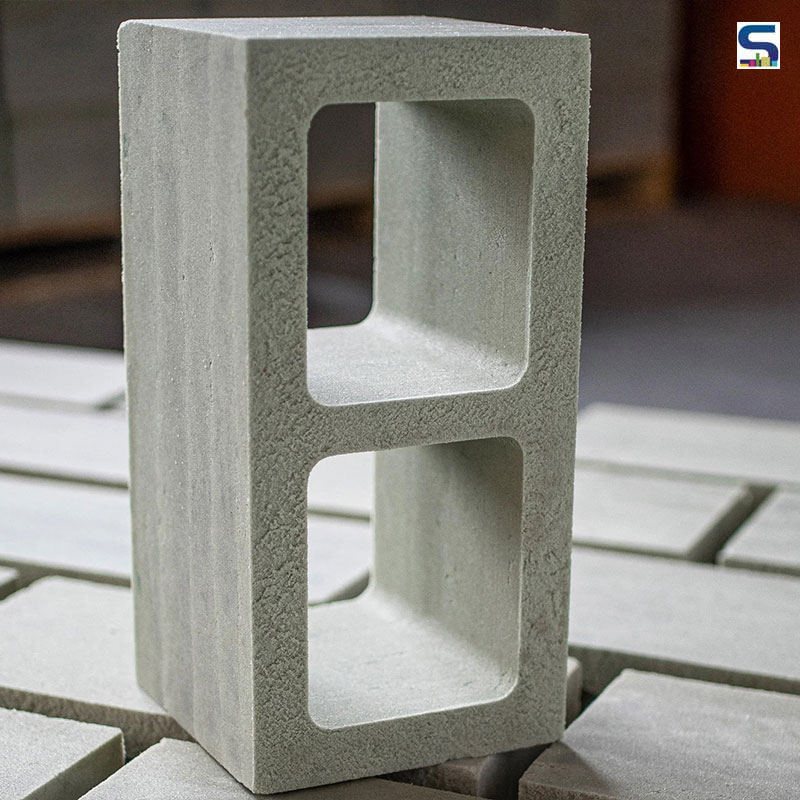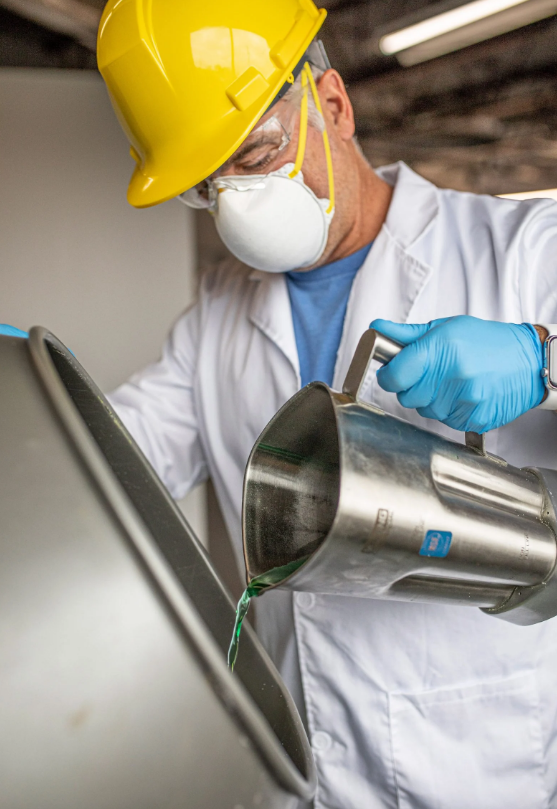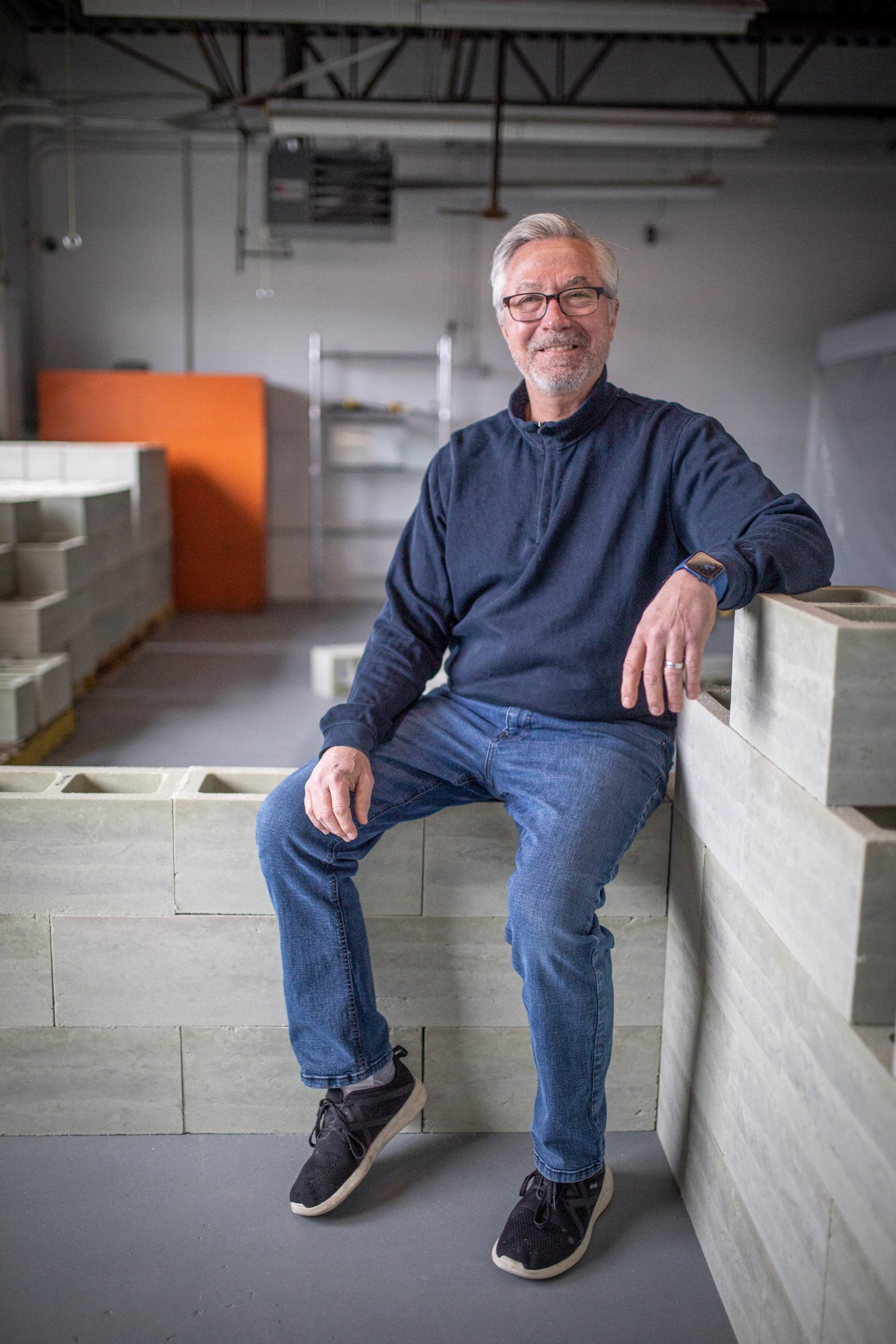
Colorado-based Prometheus Materials uses low-carbon cement-like material grown from micro-algae to create masonry blocks. Conforming to the American Society for Testing and Materials (ASTM) standards, these building blocks were made using cement-like material grown in bioreactors and reproduce themselves in ways similar to coral. Read more about the product below at SURFACES REPORTER (SR):
Also Read: An Ultra Strong Graphene-Enhanced Plastic Developed by Gerdau Graphene | SR Material Update
Prometheus Materials co-founder Wil V Srubar III says that they used coral reefs, shells and even the limestone to produce cement. According to him, the use of such natural materials to produce cement today represents that nature has already fathomed how to fuse materials in a strong and efficient way.
 "By working with nature to use existing microalgae to bind minerals and other materials together to create new types of sustainable biocomposite building materials, we can eliminate most, if not all, of the carbon emissions associated with traditional concrete-based building materials," he further adds.
"By working with nature to use existing microalgae to bind minerals and other materials together to create new types of sustainable biocomposite building materials, we can eliminate most, if not all, of the carbon emissions associated with traditional concrete-based building materials," he further adds.
How Bio Cement is Prepared?
The firm mixes microalgae with sunlight, water, and CO2 to create a bio cement. Firstly, cyanobacteria that are grown using seawater, sunlight and CO2 are biomineralized. the fusion of all these helps to create a low-carbon building material with physical, mechanical and thermal properties similar to Portland cement-based concrete.
Further, bio-cement can be must-produced as a substitute for Portland cement, which is a prime source of carbon emissions as it depends on clinker formed from crushed and burned limestone. The process separates calcium, which is the key element in cement, from the carbon, which is released into the atmosphere.
As per Prometheus Materials, building materials are a huge issue from a CO2 perspective.' You've got to decarbonize building materials,' he added.
Also Read: First Natural Fibre Filament-Wound Composite Structure that is Robotically Fabricated | livMatS Pavilion
Utilisation of Existing Facilities
The firm used the existing facilities in order to gather the biomaterials required to form the blocks. The University of Colorado at Boulder (CU) professors first developed the material in response to a term from the US Department of Defense to envisage sustainable materials. The material is madder by Prometheus Materials in 2021 to make it available for public use. Microsoft Climate Innovation Fund, global architecture studio SOM and European venture capital firm Sofinnova Partners provides funding for the material.
 The material is tested within the Colorado city of Boulder and will undergo the American Society for Testing and Materials (ASTM) protocols later in 2022.
The material is tested within the Colorado city of Boulder and will undergo the American Society for Testing and Materials (ASTM) protocols later in 2022.
In the coming two years, the company aims to create a precast material for wall panels, roofing tiles, sound barriers and other concrete elements.
Keep reading SURFACES REPORTER for more such articles and stories.
Join us in SOCIAL MEDIA to stay updated
SR FACEBOOK | SR LINKEDIN | SR INSTAGRAM | SR YOUTUBE
Further, Subscribe to our magazine | Sign Up for the FREE Surfaces Reporter Magazine Newsletter
Also, check out Surfaces Reporter’s encouraging, exciting and educational WEBINARS here.
You may also like to read about:
FRP Panels vs Aluminium Composite Panels: A Comparison Between the Two and Which One Is Better
This New Material Can Capture Toxic Pollutants From Air | University of Limerick | Ireland | SR Material Update
New Self-Cleaning BioPlastic Inspired By Lotus Leaf; Help Curbing Plastic Pollution | Australia | SR Material Update
and more...